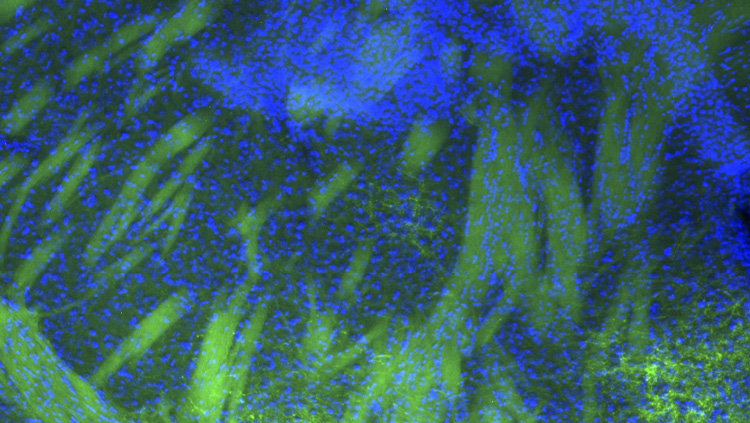
The prestigious Barry M. Goldwater Scholarship is awarded to undergraduate sophomores and juniors planning on research careers in natural sciences, mathematics, or engineering. SfN is proud some of its members are Goldwater Scholarship Award Winners. In this series, we feature three SfN members who are 2017 winners to showcase their accomplishments and offer other undergraduate members interested in conducting research a chance to learn from their experiences. Here, Duy Phan of Johns Hopkins University shares his insights.
When did you decide to pursue neuroscience for your undergraduate studies? What led you to make that decision?
When I was 10 years old, I thought that I wanted to be a professional concert pianist. But I also always found the nervous system to be beautiful and enjoyed looking at pictures and drawings of nerves. In fact, my fifth-grade arts project was a children's picture book on motor nerves. In high school, I joined a research lab at Ohio State University (OSU), and from then on, I decided to become a neuroscientist. I am now majoring in neuroscience, with a focus on systems neuroscience, at Johns Hopkins University (JHU).
What does your research focus on, and what are your responsibilities? Why does this research excite you?
My overarching research goal is to understand how neurons interconnected with each other in neural circuits drive nervous system function.
I first began addressing this question in the Beattie Lab at OSU by looking at how neural circuits are formed and how neural circuit plasticity is affected by neurological disorders. I brought my interest in neural development to the Hattar Lab at Hopkins, where I worked on how disruptive light schedules such as shift work affect adult neural stem cells to impact mood and learning. I spent summers at the Karpova Lab at Janelia Research Campus and the Yoshihara Lab at the RIKEN Brain Science Institute to gain experience in molecular tools for anatomical and functional studies of neural circuits. I am now using some of these systems approaches to characterize the anatomy and function of neural circuits that regulate circadian rhythms at the National Institute of Mental Health, where the Hattar Lab recently moved.
I have been very fortunate to have generous mentors who let me work independently on all project aspects, from conceiving ideas and submitting grant proposals to conducting experiments and writing papers for publications.
Doing independent neuroscience research is especially exciting because the nervous system allows us to experience the world. What we see, feel, and think are the result of computations performed by neural circuits. Therefore, neuroscience is the gateway by which we can learn about the biological correlates that make us uniquely human. When neurons become sick, individuals lose the ability to experience the world in a complete manner, and are affected from learning and memory disturbances to loss of voluntary movement. Understanding how neural circuits work can lead to the development of new therapies that repair dysfunctional neural circuits in nervous system disorders, putting individuals back on course with their lives.
Besides the Goldwater Scholarship, do you have other scholarships or fellowships to conduct this research?
My research is funded by several internal JHU grants, notably the three-year Woodrow Wilson Research Fellowship. In addition, my research has been supported by the NIH Undergraduate Scholarship Program. My summer research experiences were funded by several internationally competitive fellowships, including those awarded by the Howard Hughes Medical Institute’s Janelia Undergraduate Scholars program, U.S. Department of State’s Benjamin A. Gilman International Scholarship, and the RIKEN Brain Science Institute Summer Program (which is typically for graduate students and postdocs but open to others). I learned about these external grants from Hopkins’ National Fellowships Office.
How do you balance time in the lab with all of your classes and any extracurricular activities that you do?
For me, there is not much of a distinction between life inside and outside of the lab. Connecting the lab with the outside world allows me to accomplish more at once. I do homework and study while waiting for experiments to run, and when I am physically outside of the lab, I am reading papers and thinking of new and better experiments to try.
What is one piece of advice that you would offer other undergraduates who are thinking about or who are already doing lab research to help them be successful?
Enjoy the science and the opportunity to discover new and important knowledge that has the potential to make a difference in the world.
Also read An Undergraduate Research Story: Part One and An Undergraduate Research Story: Part Three.
Speaker






